Share
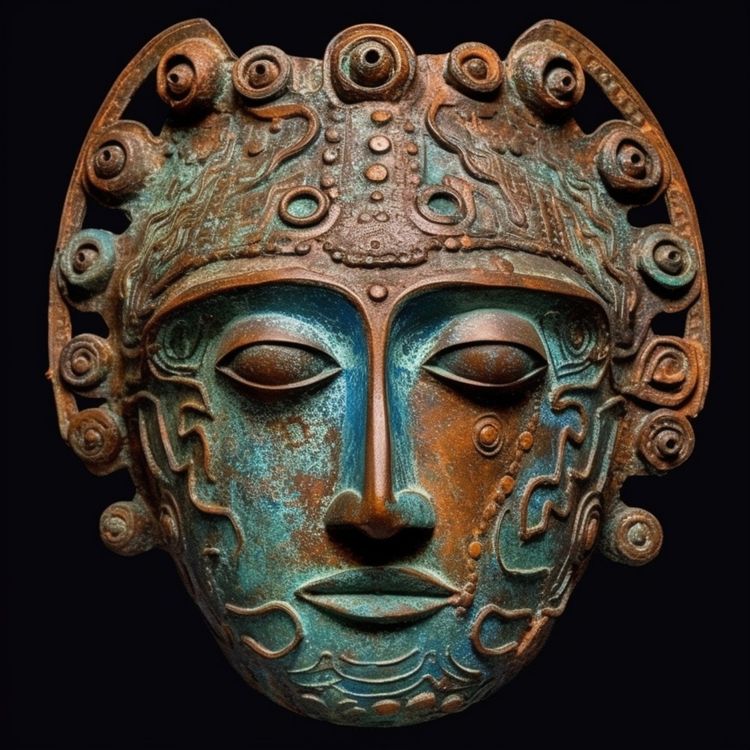
Grimdark History
Copper Age 40K Part 3 of 3
Season 1, Ep. 4
•
In the final part of our series exploring Warhammer 40K's Copper Age we do go deep into the historical parts of the Emperor's memory as presented to Ra during the novel Master of Mankind written by Aaron Dembski-Bowden. We compare what was written in the novel to the historical reality of that time and place as we understand it today. We over analyze and nerd out on the hard work and amazing planning and detail Aaron Dembski-Bowden went into researching what amounts to just a few paragraphs in this wonderful novel.
More episodes
View all episodes
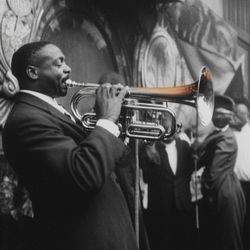
5. Sex, Jazz & Ax Murders - The Ax Murderer of New Orleans
01:01:25||Season 2, Ep. 5From 1910-1919 New Orleans would undergo a period of rapid social change. WWI would break out, Prohibition was just around the corner. The Spanish Flu was ravaging the country. And, the famed Storyville would be shut down causing an exodus of jazz musicians to the famed Second City of jazz, Chicago. Through this turbulent era of increasing mob violence, increasing prohibition era political activities, the Spanish flu, and the Great Migration of black family from the US South to North a serial killer stalked the streets of New Orleans. For 9 years the killer would break into homes in the middle of the night and attack sleeping families with a hatchet.In this episode we explore the infamous Axman of New Orleans at the close of the Storyville era. The murders, the police investigation, and trials and uncover this bloody part of New Orleans past.Sources Used: Empire of Sin, a Story of Sex, Jazz, Murder and the battle for Modern New OrleansAuthor: Gary Krist
4. Uncovering Roman Carlisle - An Interview With an Archaeological Team
55:35||Season 2, Ep. 4In 208 CE Septimius Severus travelled with his legions, and a massive entourage of as he travelled to Britain to conquer Caledonia. Through the course of his campaign many Roman forts settlements along his path were fortified and, at least temporarily, blessed with the Imperial court as it moved through what is now Carlisle in England.1800 years later flooding in the region revealed a rich legacy of Severus’ time.Frank Geicco, Technical Director of the Uncovering Roman Carlisle archaeological dig and volunteer, Tatiana Becker join me for an interview of some of the fascinating discoveries of Roman life at the northern most border of the Roman Empire. Join me as we discuss Roman life under emperor Septimius Severus and some of the amazing finds uncovered be the team of volunteers.If you would like to help to support the Uncovering Roman Carlisle archaeological dig please visit the below links to help support or learn more about this amazing slice of Roman life being painstakingly worked on by volunteers. Main Website: Uncovering Roman CarlisleFacebook Group: https://www.facebook.com/groups/6139466892735766/To Donate: https://www.uncoveringromancarlisle.co.uk/donateVolunteering (links to Eventbrite, will be updated when new dates are available. Tentatively May 31, 2025 is the next date. Check back often!): https://www.uncoveringromancarlisle.co.uk/get-involvedIf you’d like to see some of the posts of the spring 2025 dig please visit Tatiana Becker’s reddit page to keep track of recent finds: https://www.reddit.com/user/Londunnit/Frank and Anna Geico along with Martin Henig have also authored an amazing book documenting some of the most amazing discoveries from the dig in their book Uncovering Roman Carlisle – Artefacts from a Roman Drain.ISBN: 978-1805170457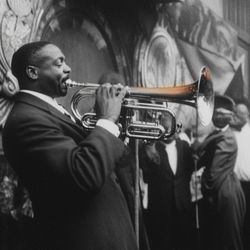
3. Sex, Jazz & Ax Murders - Robert Charles Riots & the Mayor of Storyville
01:18:25||Season 2, Ep. 3In the late 1890’s a well-dressed man from Mississippi on the run from the law moves into New Orleans under the name of Robert Charles. By all accounts he’s a well-groomed and well-spoken man who enjoys a well fitted suit, and bowler hat. One evening he and his friend are approached by police officers. As the officers and Robert get into a scuffle, Robert is shot, but escapes returning to his home and arming himself against the police. As police Captain Day comes knocking on his door later that evening, he is met with a loaded Winchester rifle and a desperate Robert Charles who shoots Captain Day and a patrolman dead in the street. What follows next is four days of rioting and mob rule that will shut down the city of New Orleans and require over 1500 volunteer police officers and the Louisiana State militia to be deployed to the city and restore order. Dozens of black bystanders will be murdered or seriously injured in what will become known as the Robert Charles Riots. Only ending in a deadly and extended shootout with Robert trapped in a New Orleans neighbourhood. Following the riots and the Saratoga Street Standoff with Robert, the crushing segregation laws of Louisiana were enforced with renewed vigor just as the historic Storyville opens its doors, forcing the black and Creole musicians of the era to fuse their distinct sounds together. In 1901 Thomas Anderson rings in the official opening of his Annex (previously the Fair Play Saloon) as a monument to the Gilded Age excess, and celebration of all things vice. By now he’s known as the unofficial Mayor of Storyville as Thomas Andersons Annex is the official stopping point for all things vice inside Storyville. Tom, ever the entrepreneur looks to make money on both sides both by plying his patrons with alcohol and entertainment, and also through his notorious Blue Books which provide a tourist guide to all the bordello houses, bars, juke joints and dance halls within Storyville’s 18 blocks. Madams like Josie Arlington and LuLu White operate the high-end brothels catering to the richest of the rich as everyone competes for the time and money of visitors. One way to keep the visitors in the seat was entertainment in the form of jazz, and its this time when a young 15-year-old Creole pianist by the name of Jelly Roll Morton will begin making his name and taking jazz in a new an innovative direction as he plays the piano in all the high-end clubs. In this episode we explore the Robert Charles Riots, the aftermath on the city, as well as the early years of Storyville and Thomas Anderson to see how the riots, jazz, and Storyville all blend together in one of the most unique eras of New Orleans history.Sources Used: Empire of Sin, a Story of Sex, Jazz, Murder and the battle for Modern New OrleansAuthor: Gary Krist
2. Sex, Jazz, & Ax Murders – The Birth of Jazz & Storyville
01:05:06||Season 2, Ep. 2In the wake of the death of Chief of Police Hennessy the mayor and the city council form a special unit to govern the investigation and arrests of suspects. Venting a racial hatred on the Italian Quarter of New Orleans a 6-month long dragnet descends on the city culminating in over 100 arrests and 20 suspects charged. The trial quickly turns into a circus as both prosecution and defense are accused of presenting mountains of false evidence along with accusations of jury tampering. A Not Guilty verdict quickly turns the city violent as the citizen militia arm of the Young Men’s Democratic Association (YMDA) organize a mob and hand out over 150 rifles to storm a prison and lynch the Italian suspects to correct a failure of justice (as they would see it). The willingness to do whatever it takes to look after the city (or at least look after the white, protestant elites of the city) give the representatives of the YMDA a carte blanche to continue their prolonged process of cleaning up the city. The resulting political capital ensures the next generation of government is run by more of the same and provides opportunity for a newly elected councilman by the name of Sydney Story to propose a radical plan to clean up the city. While no one at the time believed they could eliminate sin, they did believe they could isolate and relegate sinful behavior to out of the way places, and thereby allow all the “respectful citizens” to go about their days and avoid the seedier aspects of vice in New Orleans. Sydney Story’s proposal is approved, and one area of the city is designated a “restricted district” where bars, and bordellos will be allowed to legally operate. A second, unofficial black neighbourhood in the city is also designated for black specific businesses of a seedier persuasion. These two restricted districts will quickly become known as Storyville, and Black Storyville. And, as the two Storyville’s come together two enterprising vice lords see an amazing opportunity to work together and make a lot of money. Hennessy’s best friend, Thomas “Tom” Anderson has made a name for himself in the years since Hennessy’s death as a man of legendary hospitality and also someone with friends on both sides of the law. Using his contacts inside the New Orleans government Tom Anderson is able to purchase prime real estate inside the soon to be Storyville, and he passes this information to his good friend and soon to be business partner Josie Arlington (a madam known for running the best bordello in the city). The two look to capitalize on legalized vice in the soon to be Storyville. Amidst the swirl of Italian lynchings, and restricted districts two other major events are bubbling away inside the city of New Orleans. Young black and mixed-race men in the lower class neighbourhoods are creating a new musical sound that will become known as Jazz. Men like Buddy Bolden, Freddie Keppard, Bunk Johnson, George Bayuet, Pops Foster, and a young Creole pianist known as Jelly Roll Morton become leaders in innovating and creating this still forming musical sound. Sources Used: Empire of Sin, a Story of Sex, Jazz, Murder and the battle for Modern New OrleansAuthor: Gary Krist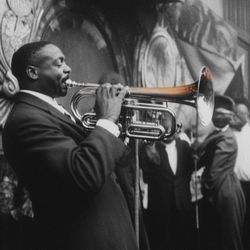
1. Sex, Jazz & Ax Murders - 1900's New Orleans
42:36||Season 2, Ep. 1The history of Storyville, and jazz has its roots in New Orleans, and America’s struggle for virtue and racial division. Post Reconstruction New Orleans is a city of corrupt officials, poorly managed government, and the virtues and ideas of Spanish/French identities clashing with the incoming protestant elites of the Temprance Movement. This episode goes into the era that Vampire Chronicles Louis de Pointe du Lac of the recent AMC TV series Interview with the Vampire takes place in. Louis grew up in the 1880-1890’s Post Reconstruction New Orleans and his formative teen years saw major events reshape the direction of the leadership in New Orleans. From increased racial segregation, temperance laws, and the haphazard reconstruction efforts of the post civil war era saw a New Orleans leadership battling long term corruption, the spread of sinful bordellos, high crime, corrupt cops, and the Italian Mafia. A major shift in the city comes in the late 1800’s as the Young Men’s Democratic Association (YMDA) bands together a political opposition and armed militia to take on the Old-World establishment. What follows is the story of increased segregation laws, temperance laws, assassinations of police chiefs, and a riot and lynching that will rock a generation of Italians and blacks living within the city. The results will create the scenario in which a city government, faced with no good choices and forced to deal with the growing anger of both the Temperance Movement and Old-World elites makes a law that will result in the creation of the famed area of New Orleans known as Storyville from which the birth of jazz traces its roots. Though Thomas C. Anderson will become a name synonymous with crime, sex, and vice during the early 1900’s, during the 1880’s-1890’s he was a close and personal friend of famed teetotaler and chief of police David Hennesy who’s efforts to stamp out corruption and battle the Italian Mafia will result in his brazen assassination and set off the first domino that will lead to the creation of Storyville and the epic location from which Season 1 of AMC’s Interview with the Vampire takes place.Sources Used: Empire of Sin, a Story of Sex, Jazz, Murder and the battle for Modern New OrleansAuthor: Gary Krist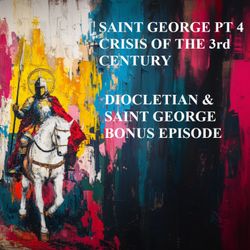
28. Crisis of the 3rd Century - Diocletian & Saint George Bonus Episode
01:14:40||Season 1, Ep. 28With the unexpected death of Aurelian and no designated heirs to the empire Rome suffers a number of emperors in quick succession with several only lasting months to a few short years. Looking like the Roman Empire might fracture yet again except for a shrewd officer named Diocletian who through good fortune and good planning is able to wrest the control of the empire and enforce stability upon it once more. Diocletian establishes what is known as the Tetrarchy, a rule of four emperors (two senior and two juniors), and though there is no clear Eastern or Western Roman Empires, Diocletian and his co-emperor Maximianus set the base upon which Rome will continue to endure for hundreds of years. First they must finally come to terms with the Franks and other Germanic tribes that have been decimating the Rhine frontiers for 30 years, and then jointly deal with yet another revolt in the form of breakaway claimant Carausius and his Britannic North Sea Empire before returning jointly to the east again and dealing with yet more revolts in Egypt. This is the era Saint George lived through. The reformation and reimagining of what the Roman Empire could be. Being fortunate enough to take advantage of the reforms of Gallienus only a couple of decades ago as enabled Christians to seek advancement in Roman society, and have career prospects in the Roman legions as Maximian and Diocletian work to enforce peace across the Roman borders. As 303 comes around, Saint George’s fortunes were to take a turn for the worse. With peace at last across the empire Maximian, Diocletian, and Diocletian’s jr emperor Galerius look to stamp out the Manichean Christian faith in the east, widely believed to be behind the most recent revolt in Egypt, before taking a broader anti-Christian stance to the rest of the empire. Saint George, caught up in the famous Christian persecutions under Diocletian in the east suffers martyrdom possibly at the hands of Galerius while a now old Diocletian looks to retire and leave the empire in the hands of the next generation. This bonus episode of Grimdark History Podcast winds down with a look across Season 1 of the podcast and a preview of Season 2 starting in January 2025. Sources Used in this episodeRoman Empire from Severus to Constantine - Patricia Southern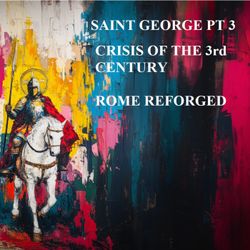
27. Crisis of the 3rd Century - Rome Reforged
01:12:32||Season 1, Ep. 27In 260 CE the fortunes of the Roman Empire are at the worst they could ever be. In a matter of months the Empire has shrunk to a third the size, the senior Emperor Valerian is a prisoner of the Persians, and most of the treasury has been lost during Valerian’s defeat and the subsequent declaration of one of Valerian’s generals (Macrianus) of his own candidacy as new Emperor. Macrianus raises the Roman eastern provinces into revolt, securing the regions of modern day Turkey, Syria, Lebanon, Palestine, and Israel, only to be usurped by Odenathus, and local non-citizen Palmyran. In the west the governor of Gaul (Postumus) fearing that Emperor Gallienus will pull legions away from Gaul to retake the eastern provinces and attack the Persians to free Valerian instead opts to declare himself as Emperor and vows to defend Rhine frontiers against the near constant raiding of the Franks, Alemanni and various Germanic tribes. Britannia and Spain declare for Postumus setting up a rival Roman Empire in the west centered in Gaul. Gallienus, the now senior Emperor is forced to radically transform what was left of the Roman Empire in order to ensure his survival. The loyalty of what legions he had left to him was paramount, and his reforms transformed what was left of Rome into an empire that was entirely subordinated to the legions. Left with a motley crew of legionaries who had been fighting with Gallienus for a decade, he’s also forced to radically reimagine what it means to be a legionary, how the army should fight. Under Gallienus the core of Rome is transformed back into the apex predator it had been under the likes Pompey and Vespasian. Setting the state of a nobody Roman plebian named Aurelian to eventually take the reigns and perform what must have at the time seemed the unthinkable, and that was to crush Postumus, retaking Gaul, Britannia, and Spain and then to retake the vasty wealth of the eastern provinces by now under the control of one of history’s most badass women, Zenobia. Sources Used in this episodeRoman Empire from Severus to Constantine - Patricia Southern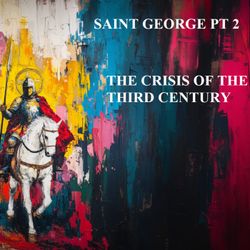
26. The Crisis of the Third Century
01:29:33||Season 1, Ep. 26In 200 CE the Roman Empire is at the tale end of a period of relative internal peace and stability across the empire known as the Pax Romana. No one could imagine that within 30 years the empire would begin to crumble with almost nightmarish speed. The first non-Roman emperor, Maximinus finds his moment at the very pinnacle of Roman power by virtue of the Edict of Caracalla which only a few decades earlier made all free people in the empire Roman citizens. Maximinus Thrax, a Thracian with a name that would make any comic villain jealous, is thrust into ultimate power and yet powerless to stop the revolts springing up around him. This is just the start of a period of convulsion and transformation of the Roman Empire as Franks, Goths, and other Germanic tribes threaten the western provinces, while a transformed Persian Sassanian Empire under Shapir I seek to retake ancient lands in the East. As successive emperors try and fail to tackle the problem of how to be in multiple places at one time provincial governors take the defense of their homelands into their own hands breaking free from Roman control in an attempt to preserve precious soldiers needed to defend their lands. The Roman senate is left completely powerless and feeling like the wallflower at the prom as legions thousands of km from Rome take it upon themselves to elect competing emperors. Events reach a low point in 260 as the empire finds its own emperor a prisoner of foreign powers, multiple provinces have declared independence, piracy runs rampant in the black seas, the Germanic tribes always a perpetual psychological fear of the Romans are raiding freely, and Persia is retaking ancient lands that have been Roman possessions for 200 years. Such a succession of events leads to an average turnover rate of one emperor every 2.8 years. It is a period of time referred to as The Crisis of the Third Century. It is into the apex of this crisis that Saint George (if he existed at all) would have been born. Growing up in, and then becoming apart of the Roman machine that stitches back together the shattered empire. But before we tell that story, we look at Crisis of the Third Century. Sources Used in this episodeRoman Empire from Severus to Constantine - Patricia Southern
25. Christians in the Early Roman Empire
01:12:10||Season 1, Ep. 25In 110 CE Pliny the Younger is appointed governor of the Roman province of Pontus-Bithynia. Within just a few months of starting the job he uncovers a community of Christians, some of which are executed. This just scratches the surface of a much more pervasive spread of the strange religion as more and more Christians are uncovered, either through anonymous accusations or as a result of torture. Pliny discovers the Christian community is widespread throughout the entire province and writes to the Emperor Trajan seeking advice. Pliny’s letter to Trajan is the very earliest non-biblical account of Christians and provides a fascinating look at the spread of early Christianity, what their religious practices were, what Roman law was concerning Christians, and why they were seen as such a threat (or not). Just 90 years later, in the now Roman city of Carthage in 203 CE, two young Christian women (Perpetua and Felicity) are arrested and brought before the governor Hilarion for trial. Perpetua’s family are wealthy enough to be able to bribe the guards of the prison to allow visits, provide materials for writing, and opportunities to beg Perpetua to recant and return to her family. What follows next is a handwritten diary of the last days of two of Christianity’s earliest saints. Outlining Roman procedures of trial, prison life, and execution. The heart felt thoughts and anxieties are recorded as two young mothers face their last days before embarking on what they see as a Passion and a guaranteed short-cut straight to the gates of Heaven. 80 Year’s following Perpetua’s martyrdom Roman attitudes towards Christianity seem to have softened somewhat. Mauritius (Saint Maurice) is a Roman citizen, an open Christian who leads the Theban Legion, an entirely Christian Roman legion, under the banner of Emperor Maximian. The legion is sent into modern day Switzerland and ordered to slaughter a Christian settlement. What follows next is a tale of an immovable object meeting an unstoppable force as devout Christians face the choice of death for defying a direct order from a Roman emperor, or eternal damnation for murdering other Christians. Saint George (if he existed at all) was born sometime around the time of Maximian and Saint Maurice. An era commonly known as the Crisis of the Third Century. Beginning our journey into the real-world and history of the time of Saint George we start by examining the earliest non-biblical accounts of Christians, exploring Roman attitudes and law towards Christians, and Christian attitudes towards Roman authority. Sources Used in this seriesMillennium - Tom HollandRoman Empire from Severus to Constantine - Patricia SouthernThe Passion of Saints Perpetua and Felicity - PerpetuaDominion - Tom HollandComplete Letters - Oxford World Classics Pliny the Younger